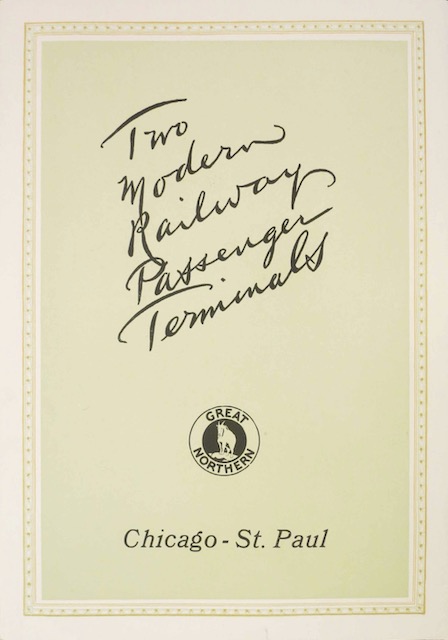In 1925, Chicago had twelve times as many people as St. Paul — 3 million people vs. a quarter million. But in the late 1920s St. Paul Union Depot (SPUD), which was completed in 1924, hosted almost as many trains per day — up to 282 — as Chicago’s Union Station, which opened in 1925 and at its peak served 300 trains per day. This brochure briefly describes the two stations, effectively showing their equality in stature.
 Click image to download a 1.1-MB PDF of this brochure.
Click image to download a 1.1-MB PDF of this brochure.
With tracks for 22 trains compared with 24 in Chicago’s Union Station, SPUD was so busy because it was the only station in the city and therefore was used by nine different railroads (GN, NP, CB&Q, C&NW, CRI&P, CM&StP, CGW, M&StL, and Soo). Chicago Union Station was one of at least six stations in the Windy City and was initially used by only four railroads: Pennsylvania, Burlington, Milwaukee, and Alton.
Technically, SPUD was owned by the St. Paul Union Depot Company, which was co-owned by the various railroads, but that company had been started by James J. Hill in 1879 for the construction of the original SPUD. Thus, GN felt some special pride in opening the new station when it issued this 1924 brochure, which I photographed at the Minnesota History Center.
